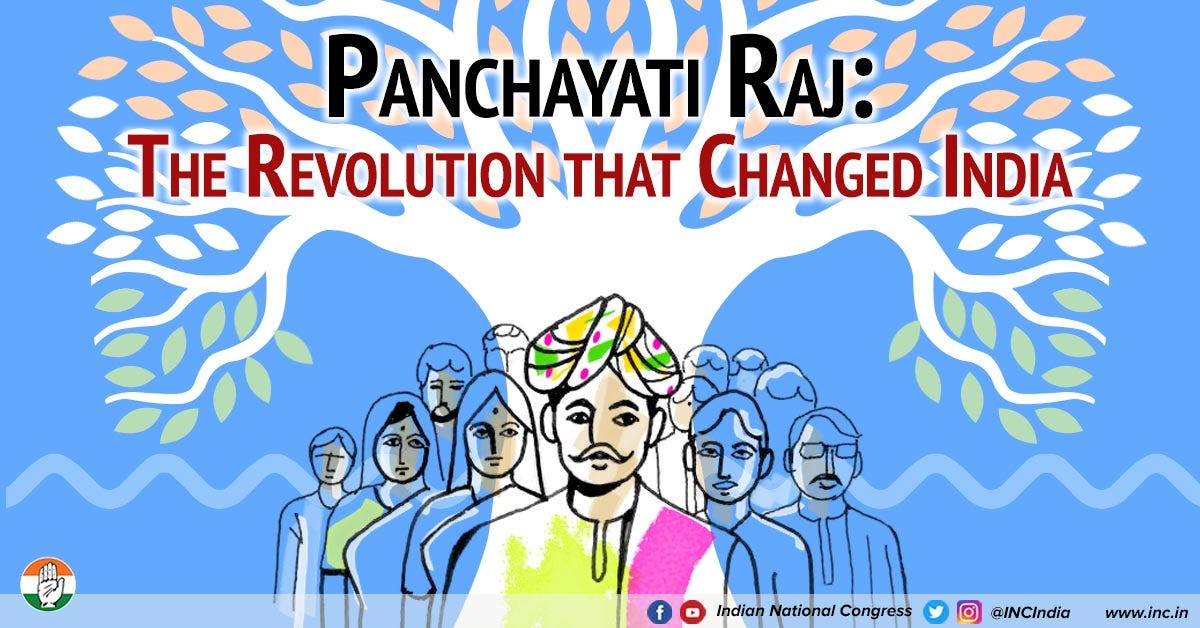Panchayat Raj is a system of local self-government in India, specifically in rural areas. It is based on the traditional panchayat system, where village leaders were elected to make decisions on behalf of the community. The Panchayat Raj system was officially established in India in 1992, with the passing of the 73rd Constitutional Amendment Act. The goal of the Panchayat Raj system is to empower rural communities by giving them greater control over their own development.
Historical Background
The concept of Panchayat Raj has a long history in India, dating back to ancient times. The traditional panchayat system was a form of local governance in which village leaders were elected to make decisions on behalf of the community. This system was based on the principles of consensus and participation and was considered to be a key aspect of village life.
During the British colonial period, the panchayat system was largely replaced by centralized government structures. However, after India gained independence in 1947, there were calls to revive the panchayat system as a way to promote rural development and decentralize decision-making.
The Panchayat Raj System
The Panchayat Raj system is composed of three levels: Gram panchayats (village councils), Mandal parishads (block councils), and Zilla parishads (district councils). Each level is elected by the people and is responsible for different aspects of local governance.
Gram panchayats, which are the lowest level of the Panchayat Raj system, are responsible for the administration of a single village. They are responsible for providing basic services such as water supply, sanitation, and primary education. They also manage local resources such as land, forests, and common property.
Mandal parishads, which are the intermediate level of the Panchayat Raj system, are responsible for the administration of a group of villages. They are responsible for providing secondary education, health care, and social welfare services. They also manage common resources such as irrigation systems and rural markets.
Zilla parishads, which are the highest level of the Panchayat Raj system, are responsible for the administration of a district. They are responsible for providing higher education, transportation, and other important infrastructure. They also oversee the work of the lower levels of the Panchayat Raj system.
Panchayat Raj and Rural Development
The Panchayat Raj system is considered to be an important tool for promoting rural development in India. The decentralization of decision-making and the participation of local communities in governance has been shown to be effective in addressing the specific needs of rural areas.
One of the main ways in which the Panchayat Raj system promotes rural development is by providing basic services such as water supply, sanitation, and primary education. These services are essential for improving the overall quality of life in rural areas. Additionally, the Panchayat Raj system also provides financial resources for the development of rural infrastructure such as roads, bridges, and irrigation systems.
Another way in which the Panchayat Raj system promotes rural development is by empowering women. The 73rd Constitutional Amendment Act includes provisions for the reservation of seats for women at all levels of the Panchayat Raj system. This has led to greater representation of women in local governance and has helped to promote gender equality in rural areas.
Challenges and Criticisms
Despite its potential to empower rural communities and promote rural development, the Panchayat Raj system has faced several challenges and criticisms. One of the main challenges is the lack of adequate funding and resources. Many Panchayat Raj institutions are underfunded and understaffed, which limits their ability to effectively carry out their responsibilities. This has led to a lack of basic services and infrastructure in many rural areas.
Another challenge is the lack of political will to implement the Panchayat Raj system effectively. Many state governments have not fully devolved power to the Panchayat Raj institutions, and have instead retained control over important functions such as development planning and resource allocation. This has limited the ability of Panchayat Raj institutions to independently initiate and implement development projects in their areas.
Furthermore, there are concerns about the quality of leadership and administration in Panchayat Raj institutions. Corruption and nepotism are major problems in many Panchayat Raj institutions, which have led to a lack of accountability and poor decision-making.
Conclusion
Despite its challenges, the Panchayat Raj system has the potential to empower rural communities and promote rural development in India. By giving local communities a greater say in the decisions that affect their lives, the Panchayat Raj system can help to address the specific needs and challenges of rural areas. However, to achieve this potential, it is crucial to address the funding and political challenges faced by Panchayat Raj institutions, and to improve the quality of leadership and administration in these institutions.

